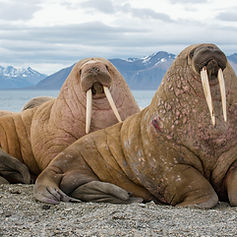History List

Salisbury describes how he discovered the all meat diet: "In 1854 the idea came to me, in one of my solitary hours, to try the effects of living exclusively upon one food at a time."
Salisbury Steak: Civil War Health Food: After 30 years of research Dr. Salisbury finally published his ideas, setting off one of the earliest American fad diets
January 1, 1854

Walt Whitman writes that "an almost exclusive meat diet" would result in "greatly, very greatly, in favor of that noble-bodied, pure-blooded, and superior race we have had a leaning toward, in these articles of ours."
Manly Health and Training, with Off-hand Hints Toward their Conditions by Mose Velsor, of Brooklyn (Pseudoname of Walt Whitman)
November 7, 1858

It can be concluded that the native [Eskimo] diet, despite its remarkably restricted composition, is capable of furnishing all the nutrients essential for nutritional health, provided it is available in adequate amounts and is prepared according to traditional methods.
The Aboriginal Eskimo Diet in Modern Perspective
January 31, 1974
"Besides, they were really making a sacrifice here, for most of the white man's food is distasteful to the Eskimos. It is not only that they could not possibly subsist on it, low in fat as it is, but that they just don't like it. Exceptions are bread, biscuits, and cake, which are considered great delicacies, along with sugar."
Book of the Eskimos
January 1, 1915

Dr Rollo, who later recommended a meat diet, writes 20 years earlier while stationed in St Lucia, that the civilized town Carenage with sugar production had far greater disease than the fishing village of Gros Islet and attributes it to a difference in diet.
Observations on the Diseases Which Appeared in the Army at St. Lucia in 1778 and 1779. To Which Are Prefixed Remarks, Calculated to Assist in Explaining the Treatment of Those Diseases. With an Appendix, Containing a Short Address to Military Gentlemen on the Means of Preserving Health in the West Indies
December 1, 1778

Dr Hugo Stettiner cures 5 patients with a carbohydrate-free diet to resolve their oxyurisis, the human pinworm parasite, and thinks diet is more important than drugs which only had temporary success.
To Treat the Oxyuriasis - Short Message from Dr. Hugo Stettiner ZUR BEHANDLUNG DER OXYURIASIS
May 6, 1912

Dr John Fletcher Little describes the incredible effects of a 6 week carnivore diet in his own body. He records improvements in weight, gout, flatulent indigestion, mental and bodily activity, better sleep, better immune system, and stronger muscles.
The Carnivorous Diet in The British Medical Journal
February 13, 1886

German writer, Bernard Moncriff, discovers an exclusively animal based diet and conducts several dietary experiments that lead him to conclude this diet is superior to a mixed or vegetarian diet.
The Philosophy of the Stomach; on, an Exclusively Animal Diet (Without any vegetable or condiment whatever) is the Most Wholesome and Fit for Man. Illustrated by Experiments upon Himself.
January 1, 1856








































